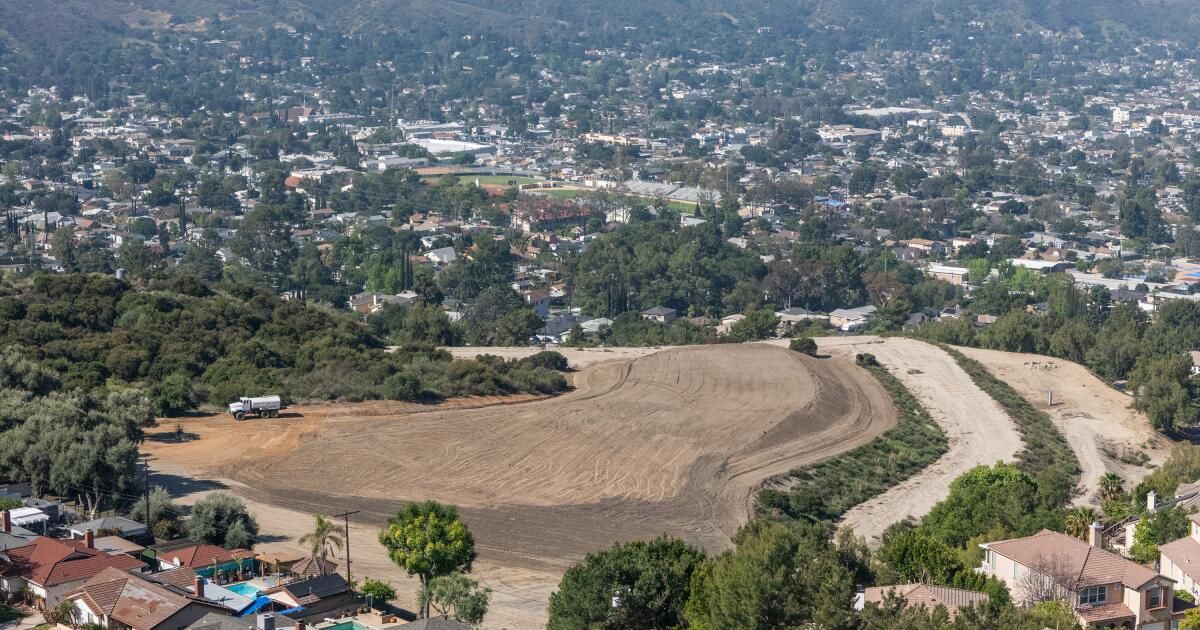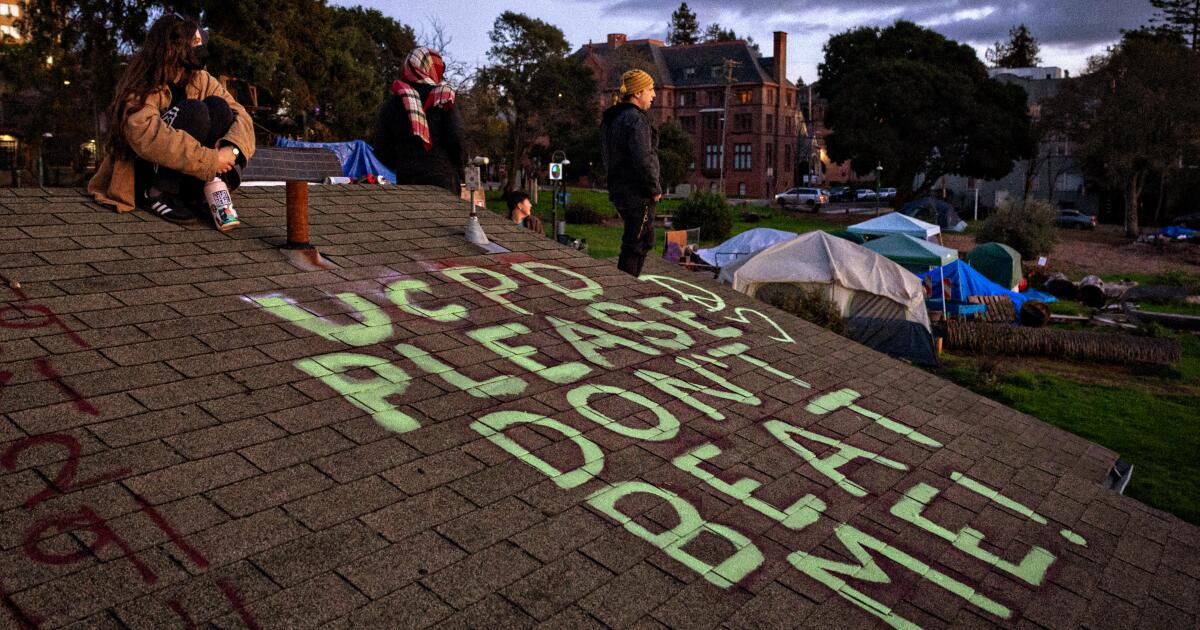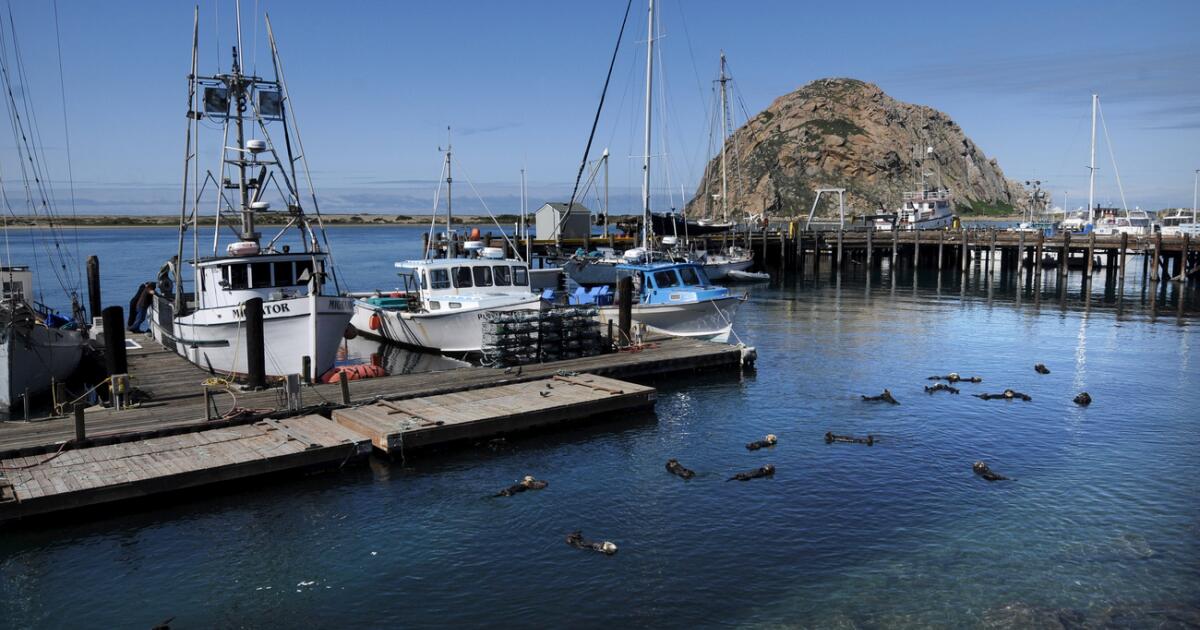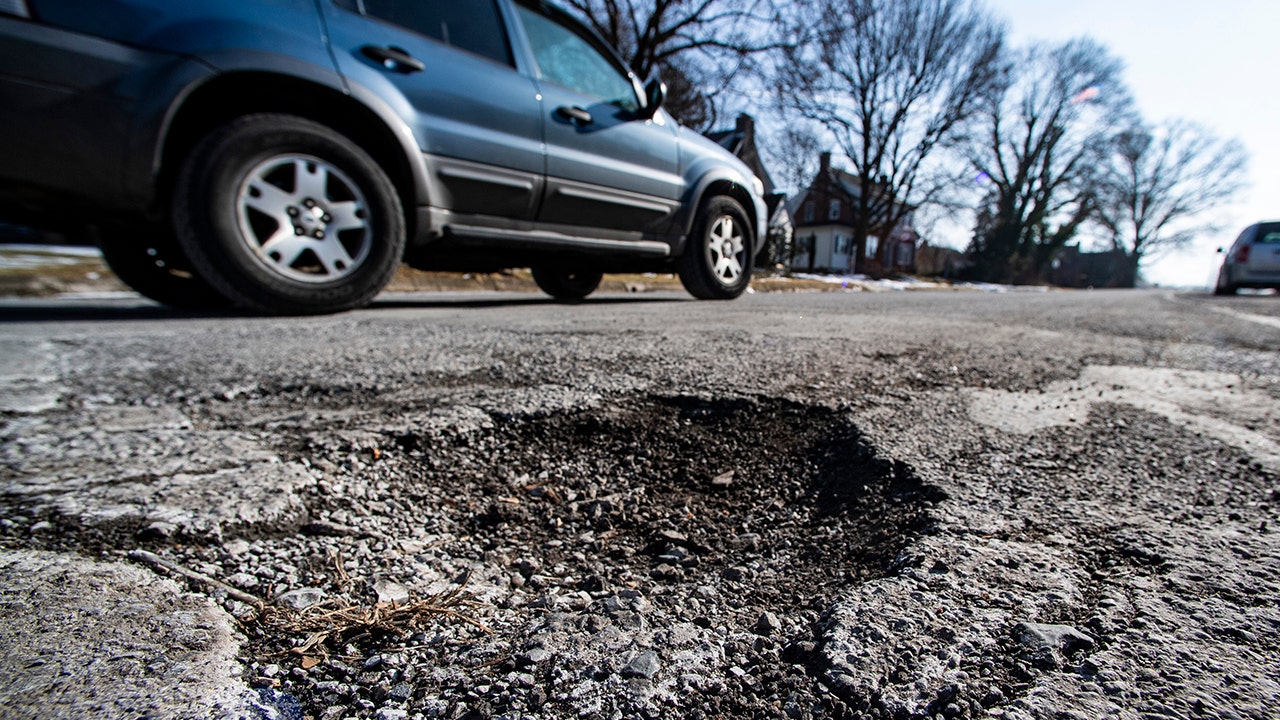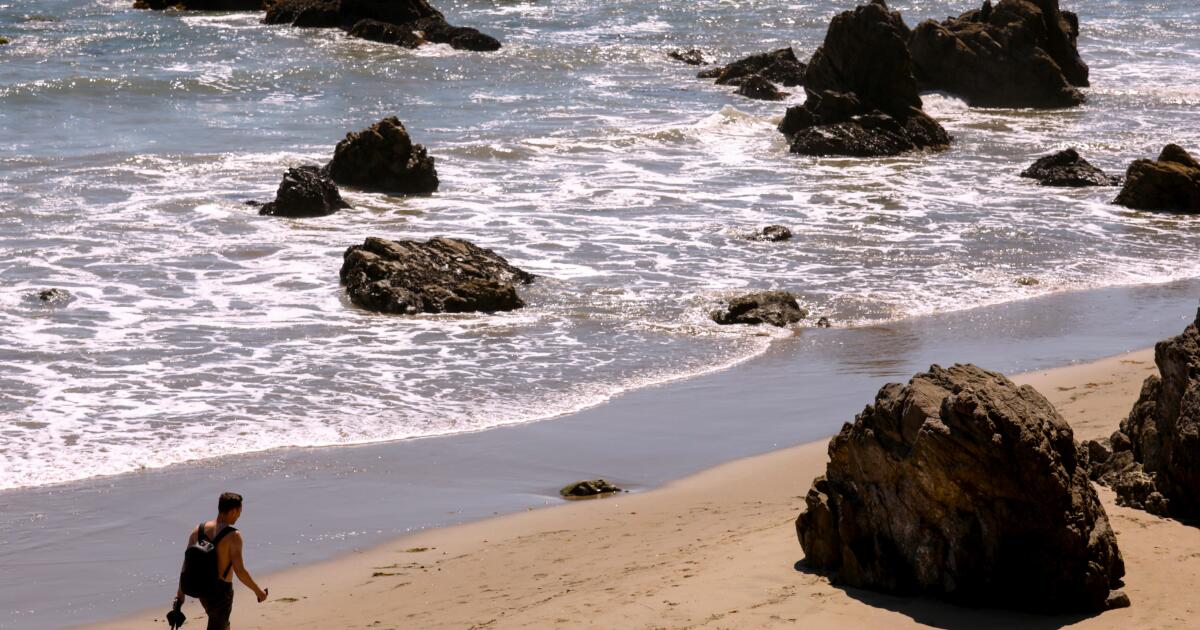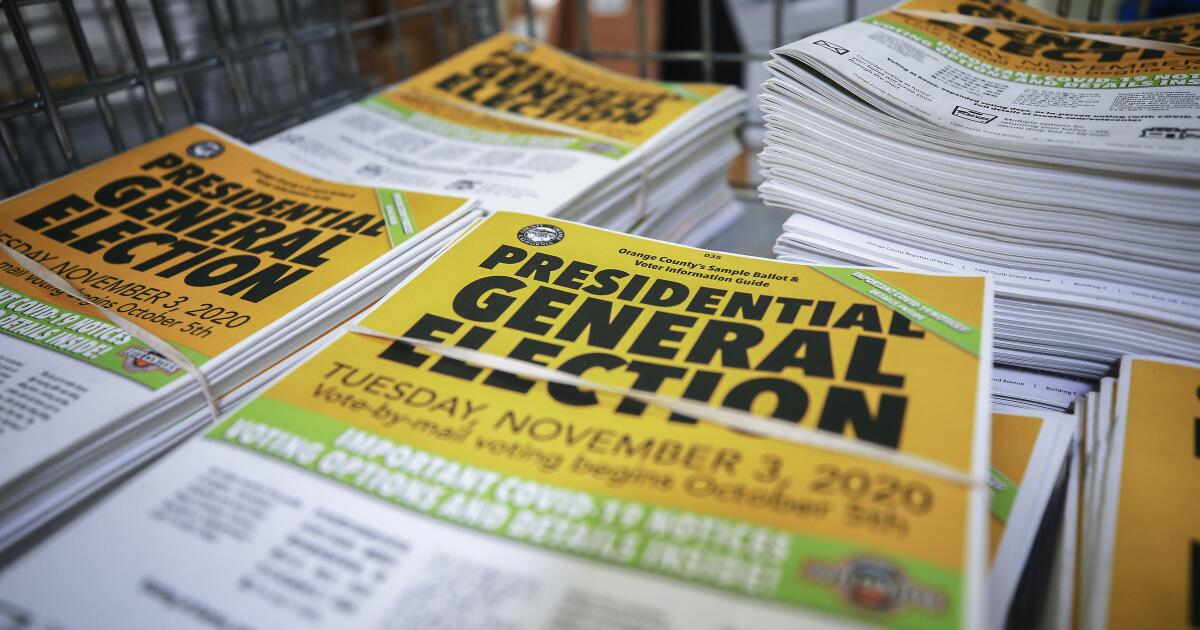The residents of the steep enclave of Tujunga suspected in January after the trucks full of land began to flood the streets of their neighborhood, throwing their loads on the nearby property of ownership of the County.
Their consultations revealed that the trucks transported sediments of winter storm dredging of capture basins that quickly flooded with runoff in and around Altadena with fire scars.
The basins, essential for flooding in the mountains of San Gabriel, are largely on the areas of residential burns, according to the county.
But the Transport and Dumping operation has led to a dramatic consequence between the County officials and the residents of Tujunga and is another example of a fearful community of accepting debris related to the fires of Eaton and Palisades.
Residents say that harmful dirt is being truck. At least one place slipped at the site earlier this year to collect and then private the floor of the capture basin. The results found selenium and arsenic, according to the community.
“I'm afraid and I'm angry,” said Karen Von Gutenn, a resident of Tujunga, who lives about 150 yards from the county site. It no longer feels comfortable gardening for long periods of time due to a harmful smell attributed to the site.
County officials argue that the ground is safe.
At the same time, Tujunga's locals, who enjoy their relative isolation that lives against the resistant backdrop of the mountains of San Gabriel, say they are tormented by noise, vibrations and dust caused by transport trucks, which cross homes in this semi -regular area.
Everything is Anathema to the history and reputation of Tujunga as a community of clean air. As of the 1920s, the area began to attract people who have asthma. Today, the neighborhood still attracts residents who seek to escape the contaminants and noise of the city's life. And apart from the mountains, the area is home to bears, deer and rabbits.
Caroline Kim Palacios said she was forced to temporarily move her 70 -year -old mother, Suki Kim, from her mother's house next to the county site after she complained about a throat pain, burning in the eyes and lungs, and the nausea in March. His mother believes that these problems are linked to transport operations, said Kim Palacios.
He also pointed out wildlife, including deer, which come through the area and nearby. “I'm worried about the ecosystem,” said Kim Palacios.
A county apology, but the discharge continues
County officials recognized at a March meeting with the Tujunga locals who did not warn residents about the operation at the 17.5 acres site.
“I'm sorry not to handle it better,” said County Engineer Laren Bunker, according to a recording of the meeting. “I think we could have been a bit better in our communication with the community.”
Lydia Grant, president of the Sunland-Tujunga neighborhood council, said she followed a truck of this sediment placement site of Zachau Canyon in Tujunga to Altadena to confirm that the dirt of that fire zone was taking her neighborhood.
(Myung J. Chun / Los Angeles Times)
The county began to transport debris to its Lot of Sevenhills Drive in January after not using the site for 15 years, according to county officials. The lot was activated due to the magnitude of the storm remains that had to be removed from the basins.
Although the operations stopped earlier this month, transport is likely to resume after future rain storms, the county said.
The lot, known as Zachau sediment placement site, is limited by a high fence and next to several houses.
The spokeswoman for the Public Works of the County, Elizabeth Vázquez, said that the sediment brought to Tujunga came from the West Barranco and the ferns of ferns on the edge of a mountainous area. Some houses that burned on the hills are above the basins.
The photos taken in February by Altadena residents show the basin full of dark mud -shaped waste.
The rubble include “vegetative matter,” said Vázquez, who said the operators scraped the upper layer and sent it to a Simi Valley landfill, with land and rocks that go to Zachau.
Some ashes of the unvotable slopes may have finished in the basin, the underground storm drainage system and the landfill, Vázquez said. She said Phos-Chek, a flame retardant, was not observed in the rubble basins.

The west neighborhood basin in Altadena was swollen with rubble on February 14.
(Courtesy of Michael Bicay)
Vázquez also said that the crews took action, including the installation of a berma, to prevent the debris of the burned households from having the properties.
Flooded with rumbing trucks
Colin Sweeney, spokesman for the Los Angeles Department of Transportation, told The Times that the county is not obliged to clean its truck routes with the city.
In Tujunga, residents who live along the route described trucks that rumbled beyond their homes. The chillido of the truck brakes was particularly tortuous, they said.
Ara Khatchadourian lives in the corner of Commerce Avenue and Summrite Street, and moved to Tujunga two and a half years ago because he and his wife wanted a quiet neighborhood after living next to a high school in Glendale.
-
Share by
The trucks started in the morning and went all day, six days a week. Seven tiles on the floor of his dining room were cracked in March, that he blames the vibration of the trucks.
“It has been a very stressful moment,” Khatchadourian said.
Karen Von Gutenn and her husband, Jon, who live near the Zachau site, moved to Tujunga in 1987 and enjoy the owls and other wildlife who go to their backyard.
Today, he said, he can't always keep his windows open without a smell of his home. After the trucks arrived for the first time in January, there was a strong smell of “burned rubber” that finally decreased but is still annoying, he said. Her husband described the smell as similar to an “old car engine.”
A representative of the Air Quality Management District of the South Coast said the agency has received 23 complaints that allege traffic, smells and soil dust related to Zachau since January 7.
“South Coast AQMD responded to each complaint and made inspections on the site in nine different days,” said spokesman Nahal Mogharabi. “Our inspectors did not detect odors in the area and did not observe any violation of air quality during any of those visits in person.”
Multiple soil tests
The dirt collected by a resident on the site showed Selenium, a trace element that can be harmful in heavy concentrations, according to the results, which were reviewed by the times.
The laboratory results also showed arsenic in higher amounts than federal and state levels, but below another common level used in California.
The county made its own Zachau tests and the two storm basins, and those results did not show selenium and generally the same levels of arsenic, according to the tests, that the times reviewed.
“You could take two tablespoons and get two different results,” said Joe Sevrean, laboratory director in 1 laboratories, who handled the community test.
The Los Angeles County Supervisor, Kathryn Barger, who represents the area, told the Times in an email that “the toxicologist reviewed the samples collected by the residents and their tests indicate that the soil is clean and is fine within the state security standards.”
The councilor of the city of Los Angeles, Monica Rodríguez, demanded that the county fix the roads in Tujunga that, according to her, were damaged by the trucks.
Rodríguez, whose district includes Tujunga, told Mark Pestrella, director of the Public Works of Los Angeles County, who is “deeply worried” for the use of the county site.
The Tujunga community wants the county to do more evidence. Residents are also preparing for the next storm and another round of trucks.
A county officer told residents to consider eliminating speed potholes along the truck route, so that trucks do not have to stop and make a squeaky sound.

